
Sears Canada, Inc., 222 Jarvis Street, Toronto, Ontario, Canada M5B 2B8
Models / Modèles
www.sears.ca
3828JL8056C
Printed in Mexico
CONGÉLATEUR INFÉRIEUR RÉFRIGÉRATEUR
Guide d'Utilisation et d'Entretien
BOTTOM FREEZER REFRIGERATOR
Use & Care Guide
501- 5012, 501-65019, 501-65092, 501-650936
ENGLISH FRANÇAIS
R

English Version 2
Warranty 3
Protection Agreements 3
Safety Instructions 4
Grounding Requirements 5
Parts and Features 6–7
Refrigerator Installation 8–15
Unpacking Your Refrigerator 8
Installation 8
Base Grille 8
Removing, Reversing and Replacing
Your Refrigerator Doors 9–14
Leveling and Door Alignment 15
Using Your Refrigerator 16–23
Ensuring Proper Air Circulation 16
Multi Flow 16
Setting the Controls 16
Adjusting Control Settings 17
Food Storage Guide 17
Storing Frozen Food 18
Refrigerator Shelves 19
Snack Pan 20
Suprafresh Crispers with Tilt-out Compartment 20
Crisper Humidity Control 20
Crisper with Tilt-out Feature 20
Crisper Cover with Lattice on inner Surface 21
Door Racks 21
Modular Door Bins 21
Dairy Corner 22
Tilt-Out Door Basket 22
Ice Bin 22
Durabase 22
Wire Durabase 22
Durabase Divider 23
Drawer Tray 23
Glide-Out Drawer Baskets 23
2
TABLE OF CONTENTS
Care and Cleaning 24–25
General Cleaning Tips 24
Outside 24
Inside Walls 24
Door Liner and Gaskets 24
Plastic Parts 24
Condenser Coils 24
Light Bulb Replacement 24–25
Power Interruptions 25
When you go on vacation 25
About the Automatic Icemaker 26
Connecting the Water Line 27–29
Troubleshooting Guide 30–33
Customer Service Back Cover
Triple Twist Ice Tray 23

FULL ONE-YEAR WARRANTY ON REFRIGERATOR
for one year from the date of purchase, if this Kenmore Refrigerator fails due to a defect in material or workmanship,
Sears will repair it free of charge.
FULL FIVE-YEAR WARRANTY ON THE SEALED REFRIGERATION SYSTEM
For five years from the date of the purchase, if any part of the sealed system (consisting of refrigerant, connecting
tube and compressor) in this Kenmore Refrigerator fails due to a defect in material or workmanship, Sears will repair it
free of charge.
LIMITED TEN-YEAR WARRANTY ON THE COMPRESSOR - PARTS ONLY.
For ten years from the date of purchase, if the compressor in this Kenmore Refrigerator fails due to a defect in
material or workmanship, Sears, at its discretion, will repair or replace the compressor free of charge. (Labour not
included.)
The above warranty coverage applies only to refrigerators which are used for the storage of food for private household
purposes.
WARRANTY SERVICE IS AVAILABLE BY CONTACTING SEARS SERVICE AT 1-800-LE-FOYER.
This warranty applies only while this product is in use in Canada.
This warranty gives you specific legal rights, and you may also have other rights which vary from state to state.
Sears Canada, Inc., 222 Jarvis Street, Toronto, Ontario, Canada M5B 2B8
BOTTOM-MOUNT REFRIGERATOR
WARRANTY CANADA
3
Protection Agreement
This purchase has an added value by the Sears service
center. With more than 2,400 technicians and an access
to more than 900,000 parts and accessories, we have the
tools, the parts, knowledge and the ability to offer a
assured After-sales service.
This Kenmore appliance is designed, manufactured and
tested to offer years of reliable operation. However, any
appliance can require a service at other time. The
protection contract Sears offers an excellent protection
program at accessible price.
Sears Protection Contract
It is a way of getting a service at atractive price, eliminating
the expenses of repair resulting from a normal use.
Assure a non technical and explanatory help, even if is not
necessary a repair, allows an annual preventive checking,
on request, in order to assure that your product functions
adequately.
Some limitations an exclusions apply.
For more details and additional infomation about
Sears Canada Protection Contract, call 1-800-361-6665
In the space below, record your complete model number,
serial number and purchase date. You can find this
information on the model and serial label, located on the
right hand side of the refrigerator compartment.
Have this information available to help you obtain
assistance or service more quickly whenever you contact
Sears concerning your refrigerator.
Model Number _________________________________
Serial Number _________________________________
Purchase Date _________________________________
Save these instructions and your sales receipt for feature
reference.

This guide contains many important safety messages. Always read and obey all safety messages.
This is the safety alert symbol. It alerts you to safety messages that inform you
of hazards that can kill or hurt you or others, or cause damage to the product.
All safety messages will be preceded by the safety alert symbol and the hazard
signal word DANGER, WARNING, CAUTION. These words mean:
WARNING
CAUTION
You can be killed or seriously injured if you don’t follow instructions.
Indicates an imminently hazardous situation which, if not avoided,
may result in minor or moderate injury, or product damage only.
All safety messages will identify the hazard, tell you how to reduce the chance of injury and tell you what can happen if
the instructions are not followed.
SAFETY MESSAGES
WARNING
To reduce the risk of fire, electric shock, or injury
to persons when using your product, basic safety
precautions should be followed, including the following:
Read all instructions before using this appliance.
•NEVER unplug your refrigerator by pulling on the power
cord. Always grip the plug firmly and pull it straight out from
the outlet.
•Repair or replace immediately all electric service cords that
have become frayed or otherwise damaged. Do not use a
cord that shows cracks or abrasion damage along its length
or at either the plug or connector end.
•When moving your refrigerator away from the wall,
be careful not to roll over or damage the power cord.
•DO NOT store or use gasoline or other flammable vapors
and liquids in the vicinity of this or any other appliance.
•DO NOT allow children to climb, stand or hang on the
refrigerator doors or shelves in the refrigerator. They could
damage the refrigerator and seriously injure themselves.
•Keep fingers out of pinch point areas; clearances between
the doors and between the doors and cabinet are
necessarily small. Be careful closing doors when children
are in the area.
•Unplug your refrigerator before cleaning or making any
repairs.
NOTE: We strongly recommend that any servicing be
performed by a qualified individual.
•Before replacing a burned-out light bulb, unplug the
refrigerator or turn off power at the circuit breaker or fuse
box in order to avoid contact with a live wire filament. (A
burned-out light bulb may break when being replaced.)
NOTE: Setting either or both controls to the OFF position
does not remove power to the light circuit.
•This refrigerator must be properly installed in accordance
with the Attention Installer Instructions that were taped
to the front of the refrigerator.
•After your refrigerator is in operation, do not touch the cold
surfaces in the freezer compartment when hands are damp
or wet. Skin may adhere to the extremely cold surfaces.
•In refrigerators with automatic icemakers, avoid contact
with the moving parts of the ejector mechanism, or with the
heating element that releases the cubes. DO NOT place
fingers or hands on the automatic icemaking mechanism
while the refrigerator is plugged in.
•DO NOT refreeze frozen foods which have thawed
completely. The United States Department of Agriculture in
Home and Garden Bulletin No. 69 says:
…You may safely refreeze frozen foods that have thawed if
they still contain ice crystals or if they are still cold—below
40°F (4°C).
…Thawed ground meats, poultry or fish that have any off-
odor or off-color should not be refrozen and should not be
eaten. Thawed ice cream should be discarded. If the odor
or color of any food is poor or questionable, get rid of it.
The food may be dangerous to eat.
Even partial thawing and refreezing reduces the eating
quality of foods, particularly fruits, vegetables and prepared
foods. The eating quality of red meats is affected less than
that of many other foods. Use refrozen foods as soon as
possible to save as much of their quality as you can.
IMPORTANT SAFETY INSTRUCTIONS
SAVE THESE INSTRUCTIONS
4
DANGER You will be killed or seriously injured if you don’t follow instructions.

IMPORTANT: Please read carefully.
TO CONNECT ELECTRICITY
RECOMMENDED GROUNDING METHOD
The refrigerator should always be plugged into its own
individual properly grounded electrical outlet rated for
115 Volts, 60 Hz, AC only, and fused at 15 or 20 amperes.
This provides the best performance and also prevents
overloading house wiring circuits which could cause a fire
hazard from overheated wires. It is recommended that a
separate circuit serving only this appliance be provided.
Use a receptacle which cannot be turned off with a switch
or pull chain. Do not use an extension cord.
Where a standard two-prong wall outlet is encountered,
it is your personal responsibility and obligation to have it
replaced with a properly grounded three-prong wall outlet.
Do not, under any circumstances, cut or remove the
third (ground) prong from the power cord.
NOTE: Before performing any type of installation,
cleaning, or removing a light bulb, turn the control
(Thermostat, Refrigerator Control or Freezer Control,
depending on the model) to OFF and then disconnect the
refrigerator from the electrical source. When you are
finished, reconnect the refrigerator to the electrical source
and reset the control (Thermostat, Refrigerator Control or
Freezer Control, depending on the model) to the desired
setting.
USE OF EXTENSION CORDS
Because of potential safety hazards under certain
conditions, we strongly recommend against the use of
an extension cord. However, if you still elect to use an
extension cord, it is absolutely necessary that it be a
UL-listed (USA), 3-wire grounding type appliance
extension cord having a grounding type plug and outlet,
and that the electrical rating of the cord be 15 amperes
(minimum) and 120 volts.
Use of an extension cord will increase the clearance
needed for the back of the refrigerator.
WARNING
Electrical Shock Hazard
FOR PERSONAL SAFETY, this appliance must be
properly grounded. Have the wall outlet and the
circuit checked by a qualified electrician to make sure
the outlet is properly grounded.
Ensure proper
ground exists
before use.
3-prong
grounding
plug
3-prong
grounding type
wall receptacle
Your old refrigerator may have a cooling system that used
CFCs (chlorofluorocarbons). CFCs are believed to harm
stratospheric ozone.
If you are throwing away your old refrigerator, make sure
the CFC refrigerant is removed for proper disposal by a
qualified servicer. If you intentionally release this CFC
refrigerant, you can be subject to fines and imprisonment
under provisions of environmental legislation.
DANGER: RISK OF CHILD ENTRAPMENT
Child entrapment and suffocation are not problems of
the past. Junked or abandoned refrigerators are still
dangerous…even if they will sit for just a few days. If
you are getting rid of your old refrigerator, please follow
the instructions at right to help prevent accidents.
BEFORE YOU THROW AWAY
YOUR OLD REFRIGERATOR
OR FREEZER
•Take off the doors.
•Leave the shelves in place so that
children may not easily climb inside.
CFC DISPOSAL
GROUNDING REQUIREMENTS
5

uuFreezer Drawer Model
6
PARTS AND FEATURES
A
B
C
D
E
F
G
H
J
K
L
N
O
P
Q
Cool Sense Electronic Temperature
Control System (p.16)
Refrigerator Light (p.24)
Refrigerator Shelves (p.19)
Snack Pan (p.20)
Supra Fresh Crisper with Tilt-Out Compartment (p.20)
Triple Twist Ice tray (p.23)
Ice Bin (p.22)
Durabase (p.22)
Divider (p.23)
Dairy Corner (p.22)
Modular Door Bins (p.21)
Egg Box (Freezer Drawer Model Only)
Wine Rack
Freezer Light (p.25)
Glide-Out Drawer Basket (p.23)
Tilt-Out Door Basket (p.22)
B
C
D
A
F
E
Use this section to become more familiar with the parts and features. Page references are included for your
convenience.
NOTE:This guide covers several different models.The refrigerator you have purchased may have some
or all of the items listed below. The locations of the features shown below may not match your model.
G
H
I
J
K
M
O
L
P
Q
M
Refrigerator Door Rack (p.21)
N

uuSwing Out Freezer Door Model
PARTS AND FEATURES
A
B
C
D
E
F
G
H
I
J
M
N
O
Cool Sense Electronic Temperature
Control System (p. 16)
Refrigerator Light (p. 24)
Refrigerator Shelves (p. 19)
Snack Pan (p. 20)
Supra Fresh Crisper with Tilt-Out Compartment (p. 20)
Adjusta Cube Ice Maker (p. 26)
Ice Bin (p. 22)
Wire Durabase (p. 22)
Dairy Corner (p. 22)
Modular Door Bins (p. 21)
Wine Rack
Freezer Light (p. 25)
Glide-Out Drawer Basket (p. 23)
Freezer Door Rack
7
B
C
D
A
F
E
Use this section to become more familiar with the parts and features. Page references are included for your
convenience.
NOTE:This guide covers several different models.The refrigerator you have purchased may have some
or all of the items listed below. The locations of the features shown below may not match your model.
G
H
I
K
M
J
N
O
L
K
Refrigerator Door Rack (p. 21)
L

UNPACKING YOUR REFRIGERATOR
Remove tape and any temporary labels from your
refrigerator before using. Do not remove any warning-
type labels, the model and serial number label, or the
TechSheet that is attached to bottom wall of the refrigerator.
To remove any remaining tape or glue, rub the area
briskly with your thumb. Tape or glue residue can also be
easily removed by rubbing a small amount of liquid dish
soap over the adhesive with your fingers. Wipe with warm
water and dry.
Do not use sharp instruments, rubbing alcohol, flammable
fluids or abrasive cleaners to remove tape or glue. These
products can damage the surface of your refrigerator. For
more information, see the Important Safety Instructions
section.
Refrigerator shelves are installed in the shipping position.
Please reinstall shelves according to your individual
storage needs.
When Moving Your Refrigerator:
Your refrigerator is heavy. When moving the
refrigerator for cleaning or service, be sure to protect
the floor. Always pull the refrigerator straight out when
moving it. Do not wiggle or walk the refrigerator when
trying to move it, as floor damage could occur.
INSTALLATION
1. Avoid placing the unit near heat sources, direct sunlight
or moisture.
2. To avoid vibration, the unit must be level. If required,
adjust the leveling screws to compensate for
unevenness of the floor. The front should be slightly
higher than the rear to aid in door closing. Leveling
screws can be turned easily by tipping the cabinet
slightly. Turn the leveling screws clockwise ( ) to
raise the unit, counterclockwise ( ) to lower it.
3. Install this appliance in an area where the temperature
is between 55°F (13°C) and 110°F (43°C.) If the
temperature around the appliance is too low or high,
cooling ability may be adversely affected.
NEXT
1. Clean your refrigerator thoroughly and wipe off all dust
accumulated during shipping.
2. Install accessories such as ice cube bin, drawers,
shelves, etc., in their proper places. They are packed
together to prevent possible damage during shipment.
3. Let your refrigerator run for 2 or 3 hours before putting
food in it. Check the flow of cold air in the freezer
compartment to ensure proper cooling. Your refrigerator
is now ready for use.
CAUTION:
•Be careful when you work with hinge, base grille,
stopper etc. You may be injured.
•Do not put hands or metal sticks into air vents, base
grille or bottom of refrigerator. You may be injured or
receive an electrical shock.
BASE GRILLE
To remove the base grille:
1. Open the refrigerator door.
2. Grasp the grille with both hands.
3. Pull the grille toward yourself.
To install the base grille:
1. Open the refrigerator door.
2. Place clips in openings in the metal panel.
3. Push the grille toward the refrigerator until it snaps
into place.
REFRIGERATOR INSTALLATION
WARNING
Excessive Weight Hazard
Use two or more people to move and install
refrigerator.
Failure to do so can result in back or other injury.
WARNING
Explosion Hazard
Keep flammable materials and vapors, such as
gasoline, away from refrigerator.
Failure to do so can result in death, explosion or fire.
8

uuFor drawer type models
REMOVING, REVERSING AND REPLACING
REFRIGERATOR DOORS
TOOLS NEEDED: 10mm hex-head socket wrench,
No. 2 Phillips screwdriver, flat tip screwdriver, 10mm
open-end wrench, flat 2-inch putty knife.
IMPORTANT: Before you begin, turn the refrigerator OFF
and unplug it. Remove food and any adjustable door or
utility bins from doors.
HOW TO REVERSE DOOR OPENING DIRECTION
(when converting from the left-opening type to right-
opening type)
1. Removing Refrigerator Door
•Remove the top hinge cover (1).
•Remove the 3 screws and lift off the top hinge (2).
•Lift the Refrigerator door (3) slightly and remove it.
•Use a flat tip screwdriver to pry off top hole cover (4)
and attach it on the right.
•Loosen the screw (5), remove the stoppers (6), and
attach them on the left (on the opposite side).
•Loosen the pin (8) and remove it.
•Loosen the 2 screws (9) and the 2 screws (10), and
lift off the middle hinge (11).
•Use a flat tip screwdriver to pry off bottom hole cover
(7) and attach it on the right.
REFRIGERATOR INSTALLATION
9
1
2
3
7
4
5
6
8
9
10
11

2. Removing Refrigerator Handle
NOTE: To assist in installing the handle on the right
side, place a small piece of masking tape near the
top of the handle before removing.
•Grasp the handle tightly with both hands and slide the
handle up (1)(this may require some force).
•The keyhole slots (2) on the back of the handle allow
the handle to separate from the mounting screws (3).
•Use an adjustable wrench to remove the handle
mounting screws (3).
•Carefully pry off the plug buttons (4).
•Remove a layer of adhesive and backing to expose
new adhesive.
•Install the plug buttons (4) on left side.
•Install the handle mounting screw (3) on the right side
•Hold the handle so the masking tape is at the bottom.
•Align keyhole slots (2) on the top and bottom of the
back of the handle with the screws (3) mounted on
the front of the door.
•Press the handle against the door front, making sure
that the screws (3) go into the keyhole slots (2).
•Grasping the handle with both hands, press it firmly
against the front of the door and slide the handle
down (6). This may require some force.
10
REFRIGERATOR INSTALLATION
1
32
Screws
mounted
on door
3
Keyhole slots
on back of
handle
6
3
2Screws
mounted
on door
Keyhole slots
on back of
handle
4

3. Installing Refrigerator Door
•Install the middle hinge (1) on the opposite side with the
screws (2), and the screw (3).
•Install the door (4) so that it fits onto the middle hinge
pin (5).
•Install the top hinge (6) with screws.
•Reinstall top hinge cover (7).
4. After Completing the Job
•Make sure that each at the four corners of the door
gasket is not folded over on itself. To ensure a good
seal, apply a small amount of silicon grease on the
gasket.
REFRIGERATOR INSTALLATION
11
Corner
2
4
5
6
7
1
3

HOW TO REMOVE AND INSTALL THE
PULLOUT DRAWER
IMPORTANT: To avoid possible injury, product or property
damage, you will need two people to perform the following
instructions.
1. Removing Pullout Drawer
•Pull the drawer open to full extension. Remove the
screw (1) from each side of rail system.
•Remove the lower basket (2) by lifting basket from rail
system.
•Lift the top of door to unhook door supports from rail
system. Lift door up to remove.
2. Installing Pullout Drawer
•Pull both rail (1) out to full extension.
•Hook the door supports (2) into the rail tabs (3), as
illustrated, and lower door into final position.
•With the drawer pulled out to full extension, insert the
lower basket (4) in rail assembly.
wWARNING: To prevent accidental child and pet
entrapment or suffocation risk, DO NOT allow them to
play inside of drawer.
wWARNING: DO NOT step or sit down on Freezer Door.
REFRIGERATOR INSTALLATION
12
1
1
3
2
4
2

uuFor swing type models
REMOVING, REVERSING AND REPLACING
REFRIGERATOR DOORS
TOOLS NEEDED: 10mm hex-head socket wrench,
No. 2 Phillips screwdriver, flat tip screwdriver, 10mm
open-end wrench, flat 2-inch putty knife.
IMPORTANT: Before you begin, turn the refrigerator OFF
and unplug it. Remove food and any adjustable door or
utility bins from doors.
HOW TO REVERSE DOOR OPENING DIRECTION
(when converting from the left-opening type to right-
opening type)
1. Removing Refrigerator Door
•Remove the top hinge cover (1).
•Remove the 3 screws and lift off the top hinge (2).
•Lift the Refrigerator door (3) slightly and remove it.
•Use a flat tip screwdriver to pry off the top hole cover
(4) and attach it on the right.
•Loosen the screw (5), remove the stopper (6) and
attach them on the left (on the opposite side).
•Loosen the pin (8) and remove it.
•Lift off the washer (9).
•Use a flat tip screwdriver to pry off the bottom hole
cover (7) and attach it on the right.
2. Removing Freezer Door
•Lift the door (10) slightly and remove it.
•Loosen the 2 screws (11), the 2 screws (12), and lift
off the middle hinge (13).
•Take off the base grille (14).
•Loosen the 2 screws (16), remove the bottom hinge
(17), and attach on the right.
•Loosen the 2 screws (18), remove the bottom hinge
(19), and attach on the left.
•Loosen the 2 screws (20) and attach the stopper (21)
on the left side of the base.
3. Removing Refrigerator Handle
•Refer to page 10.
REFRIGERATOR INSTALLATION
13

4. Removing and Attaching Freezer Handle
•Remove the cap (1) and the 2 caps (2) using a flat tip
screwdriver.
•Loosen the 2 screws (3), take off the handle (4), and
install it on the right.
•Attach the caps, (1) and (2) you removed earlier.
5. Installing Freezer Door
•Install the base grille (1).
•Install the door (3) onto the bottom hinge pin.
•Install the middle hinge (4) on the opposite side with
screws (5) and (9).
6. Installing Refrigerator Door
•Place the washer (6) on the middle hinge pin (7).
•Install the door (8) so that it fits onto the middle hinge
pin (7).
•Install the top hinge (10) with screws.
•Reinstall top hinge cover (11).
7. After Completing the Job
•Make sure that each at the four corners of the door
gasket is not folded over on itself. To ensure a good
seal, apply a small amount of silicon grease on the
gasket.
REFRIGERATOR INSTALLATION
14

LEVELING AND DOOR ALIGNMENT
Door Closing
Your refrigerator has two front leveling screws—one on
the right and one on the left. If your refrigerator seems
unsteady or you want the doors to close easier, adjust the
refrigerator’s tilt using the instructions below:
1. Plug refrigerator power cord into a 3-prong grounded
outlet. Move the refrigerator into its final position.
2. Use a screwdriver to adjust the leveling screws. Turn
the leveling screw clockwise to raise that side of the
refrigerator or counterclockwise to lower it. It may take
several turns of the leveling screw to adjust the tilt of
the refrigerator.
NOTE: Having someone push against the top of the
refrigerator takes some weight off the leveling screws.
This makes it easier to adjust the screws.
3. Open both doors again and check to make sure that
they close easily. If not, tilt the refrigerator slightly more
to the rear by turning both leveling screws clockwise. It
may take several more turns, and you should turn both
leveling screws the same amount.
4. Re-adjust if necessary.
5. Replace the base grille.
Door Alignment
If the space between your doors is uneven, follow the
instructions below to align the doors:
1. Pry off the top hinge cover.
2. Loosen the top hinge screws using a 10mm socket
or wrench.
3. Have someone hold the door in place with space
between doors even, or put a spacer between doors to
keep space even, while you tighten the top hinge
screws.
4. Replace the top hinge cover.
REFRIGERATOR INSTALLATION
15

USING YOUR REFRIGERATOR
16
ENSURING PROPER AIR CIRCULATION
In order to ensure proper temperatures, air must flow
between the refrigerator and freezer sections. As shown
in the illustration below, air enters at top of freezer and
circulates down. From bottom of freezer, air is forced up
to top of refrigerator. Air enters refrigerator through top
vent, then circulates and exists at bottom, where it returns
to freezer.
MULTI-FLOW
¥Multi-Flow means powerful and effective cooling
operation. This is especially noticeable when new food
is placed in the refrigerator compartment.
¥If water or foreign substances enter the cool air vent
while cleaning, efficiency will be lowered. In addition, if
gasket is damaged, efficiency may be lowered because
of escaping cool air.
Do not block any of cool air vents with food packages.
If the vents are blocked, airflow will be interrupted and
temperature and moisture problems may occur.
IMPORTANT: Because air circulates between both
sections, any odors formed in one section will transfer to
the other. You must thoroughly clean both sections to
eliminate odors. To prevent odor transfer and drying out of
food, wrap or cover foods tightly. (See the Food Storage
Guide section for details.)
SETTING THE CONTROLS
¥Your refrigerator has two controls that let you regulate
the temperature in the freezer and refrigerator
compartments.
¥Initially set the REFRIGERATOR CONTROL at 37 °F
(3°C) and the FREEZER CONTROL at 0°F (- 18°C).
Leave it at this setting for 24 hours (one day) to
stabilize. Then adjust the compartment temperature
as desired.
¥Refrigerator control: Position 1 to 7
(32°F to 47°F / 0°C to 8°C)
The higher the number setting, the colder the refrigerator
compartment will become.
¥Freezer control: Position 1 to 7
(-6°F to 8 °F / - 21°C to - 13°C)
When the setting is at a higher number, the freezer
compartment becomes colder. But the refrigerator
compartment becomes warmer because less cold air
flows into the refrigerator.
¥Express Freezing
Press the Express Freezing key and the LED will turn
on. This function will remain activated for 24 hours and
intensify the cooling speed of freezer and increase the
amount office.

ADJUSTING CONTROL SETTINGS
Give the refrigerator time to cool down completely before
adding food. It is best to wait 24 hours before you put
food into the refrigerator. The mid-settings indicated in the
previous section should be correct for normal household
refrigerator usage. The controls are set correctly when
milk or juice is as cold as you like and when ice cream
is firm.
The refrigerator control functions as the thermostat for the
entire appliance (refrigerator and freezer sections.) The
higher the number setting, the longer the compressor will
run to keep the temperature colder. The freezer control
adjusts the cold air flow from the freezer to the
refrigerator. Setting the freezer control to a lower
temperature keeps more cold air in the Freezer
compartment to make it colder.
If you need to adjust temperatures in the refrigerator or
freezer, start by adjusting the refrigerator first. Wait 24
hours after the refrigerator adjustment to check the
freezer temperature. If it is too warm or too cold, then
adjust the freezer control as well.
Use the settings listed in the chart below as a guide.
Always remember to wait at least 24 hours between
adjustments.
RECOMMENDED
CONDITION/REASON: ADJUSTMENT:
REFRIGERATOR section Turn
too warm REFRIGERATOR
•
Door opened often control to next
•
Large amount of food added higher number,
•
Room temperature very warm wait 24 hours,
then re-check
FREEZER section too warm/ Turn FREEZER
ice not made fast enough control to next
•
Door opened often higher number,
•
Large amount of food added wait 24 hours,
•
Very cold room temperature then re-check
(can’t cycle often enough)
•
Heavy ice usage
•
Air vents blocked by items Move items out of
airstream
REFRIGERATOR section too Turn
cold REFRIGERATOR
•
Controls not set correctly for control to next
your conditions lower number,
wait 24 hours,
then re-check
FREEZER section too cold Turn FREEZER
•
Controls not set correctly for control to next
your conditions lower number,
wait 24 hours,
then re-check
FOOD STORAGE GUIDE
Storing Fresh Food
Wrap or store food in the refrigerator in airtight and
moisture-proof material unless otherwise noted. This
prevents food odor and taste transfer throughout the
refrigerator. For dated products, check date code to
ensure freshness.
Butter or margarine
Keep opened butter in a covered dish or closed
compartment. When storing an extra supply, wrap
in freezer packaging and freeze.
Cheese
Store in the original wrapping until you are ready to
use it. Once opened, rewrap tightly in plastic wrap or
aluminum foil.
Milk
Wipe milk cartons. For best storage, place milk on interior
shelf, not on door shelf.
Eggs
Store in original carton on interior shelf, not on door shelf.
Fruit
Wash, let dry, and store in refrigerator in plastic bags or in
the crisper. Do not wash or hull berries until you are ready
to use them. Sort and keep berries in their original
container in a crisper, or store in a sloosely closed paper
bag on a refrigerator shelf.
Leafy vegetables
Remove store wrapping and trim or tear off bruised and
discolored areas. Wash in cold water and drain. Place in
plastic bag or plastic container and store in crisper.
Vegetables with skins (carrots, peppers)
Place in plastic bags or plastic container and store
in crisper.
Fish
Use fresh fish and shellfish the same day purchased.
Snack pan
Store most snacks in original wrapping as long as it is
airtight and moisture-proof. Rewrap if necessary.
Leftovers
Cover leftovers with plastic wrap or aluminum foil. Plastic
containers with tight lids can also be used.
USING YOUR REFRIGERATOR
17

STORING FROZEN FOOD
NOTE: For further information about preparing food for
freezing or food storage times, check a freezer guide or a
reliable cookbook.
Packaging
Successful freezing depends on correct packaging. When
you close and seal the package, it must not allow air or
moisture in or out. If it does, you could have food odor
and taste transfer throughout the refrigerator and also dry
out frozen food.
Packaging recommendations:
•Rigid plastic containers with tight-fitting lids
•Straight-sided canning/freezing jars
•Heavy-duty aluminum foil
•Plastic-coated paper
•Non-permeable plastic wraps
•Specified freezer-grade self-sealing plastic bags
Follow package or container instructions for proper
freezing methods.
Do not use:
•Bread wrappers
•Non-polyethylene plastic containers
•Containers without tight lids
•Wax paper or wax-coated freezer wrap
•Thin, semi-permeable wrap
Freezing
Your freezer will not quick-freeze any large quantity of
food. Do not put more unfrozen food into the freezer than
will freeze within 24 hours (no more than 2 to 3 lbs of food
per cubic foot of freezer space). Leave enough space in
the freezer for air to circulate around packages. Be careful
to leave enough room at
the front so the door can close tightly.
Storage times will vary according to the quality and type
of food, the type of packaging or wrap used (airtight and
moisture-proof) and the storage temperature. Ice crystals
inside a sealed package are normal. This simply means
that moisture in the food and air inside the package have
condensed, creating ice crystals.
NOTE: Allow hot foods to cool at room temperature for
30 minutes, then package and freeze. Cooling hot foods
before freezing saves energy.
USING YOUR REFRIGERATOR
18

REFRIGERATOR SECTION
REFRIGERATOR SHELVES
The shelves in your refrigerator are adjustable to meet
your individual storage needs. Your model may have
glass or wire shelves.
Storing similar food items together in your refrigerator and
adjusting the shelves to fit different heights of items will
make finding the exact item you want easier; it will also
reduce the amount of time the refrigerator door is open,
saving energy.
IMPORTANT: Do not clean glass shelves with warm
water when they are cold. Shelves may break if exposed
to sudden temperature changes or impact, such as
bumping. For your protection, glass shelves are made
with tempered glass, which will shatter into small pebble-
sized pieces.
NOTE: Glass shelves are heavy. Use special care when
removing them to avoid dropping them.
Adjusting Shelves
Remove shelves from the shipping position and replace
shelves in the position you want.
•To remove a shelf—Tilt up the front of the shelf in the
direction of (1) and lift it in the direction of (2). Pull the
shelf out.
•To replace a shelf—Tilt the front of the shelf up and
guide the shelf hooks into the slots at a desired height.
Then lower the front of the shelf so that the hooks drop
into the slots.
NOTE: Make sure that shelves are level from one side to
the other. Failure to do so may result in the shelf falling or
spilling food.
USING YOUR REFRIGERATOR
19

SNACK PAN
While holding the snack pan with one hand, pull it forward
slightly. Lift slightly and pull it out.
SUPRAFRESH CRISPERS WITH TILT-OUT
COMPARTMENT
Crispers with Tilt-Out Compartment
The crispers provide fresher-tasting fruit and vegetables
by letting you easily control humidity inside the drawer.
The crispers include:
1. A crisper drawer humidity control switch.
2. A lattice on the underside of the cover to efficiently hold
or release moisture.
3. A tilt-out compartment on the front of the crisper drawer.
CRISPER HUMIDITY CONTROL
You can control the amount of humidity in the moisture-
sealed crispers. Adjust the control to any setting between
and .
•lets moist air out of the crisper for best storage of
fruits.
•keeps moist air in the crisper for best storage of
fresh, leafy vegetables.
CRISPER WITH TILT-OUT FEATURE
Tilt-Out Compartment
The tilt-out compartment on the front of the crisper is for
items stored best in low humidity such as apples and
oranges. The front of the compartment is transparent to
allow you to see compartment contents. Push the button
on the front of the compartment to open it.
To remove tilt-out compartment:
1. Pull crisper drawer out to the stop.
2. Open the compartment.
3. Grasp side of drawer and pull outward to release tab at
compartment base. Pull compartment toward you to
remove.
4. To replace compartment, insert compartment base tab
into one side of drawer. Pull slightly outward on
opposite side of drawer to insert other base tab.
Removing Crisper
To remove crisper drawer:
1. Slide drawer straight out to the stop.
2. Lift the front of the drawer, then pull it out to remove.
3. Replace the drawer by sliding it back in fully past the
drawer stop.
USING YOUR REFRIGERATOR
20
1
3
2
3
Page is loading ...
Page is loading ...
Page is loading ...
Page is loading ...
Page is loading ...
Page is loading ...
Page is loading ...
Page is loading ...
Page is loading ...
Page is loading ...
Page is loading ...
Page is loading ...
Page is loading ...
Page is loading ...
Page is loading ...
-
 1
1
-
 2
2
-
 3
3
-
 4
4
-
 5
5
-
 6
6
-
 7
7
-
 8
8
-
 9
9
-
 10
10
-
 11
11
-
 12
12
-
 13
13
-
 14
14
-
 15
15
-
 16
16
-
 17
17
-
 18
18
-
 19
19
-
 20
20
-
 21
21
-
 22
22
-
 23
23
-
 24
24
-
 25
25
-
 26
26
-
 27
27
-
 28
28
-
 29
29
-
 30
30
-
 31
31
-
 32
32
-
 33
33
-
 34
34
-
 35
35
Ask a question and I''ll find the answer in the document
Finding information in a document is now easier with AI
Related papers
Other documents
-
Kenmore 795.7827 User manual
-
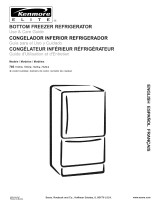 Kenmore Elite 79576282600 Owner's manual
Kenmore Elite 79576282600 Owner's manual
-
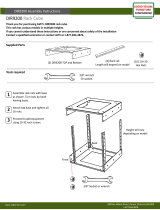 AVFI DIR9200-12 Assembly Guide
AVFI DIR9200-12 Assembly Guide
-
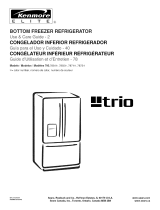 Kenmore Elite 79578552800 User manual
Kenmore Elite 79578552800 User manual
-
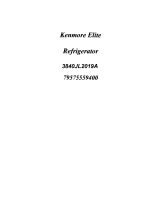 Kenmore Elite 79575559400 User manual
Kenmore Elite 79575559400 User manual
-
Kenmore Elite 79575554400 User manual
-
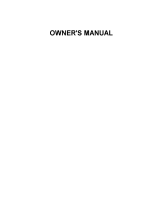 Kenmore Elite 79575196401 Owner's manual
Kenmore Elite 79575196401 Owner's manual
-
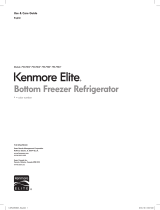 Kenmore Elite 79023 Owner's manual
Kenmore Elite 79023 Owner's manual
-
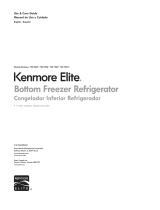 Kenmore Elite 79578042310 Owner's manual
Kenmore Elite 79578042310 Owner's manual
-
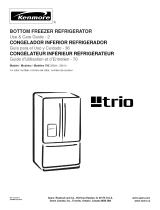 Kenmore Elite 79578516801 User manual
Kenmore Elite 79578516801 User manual










































